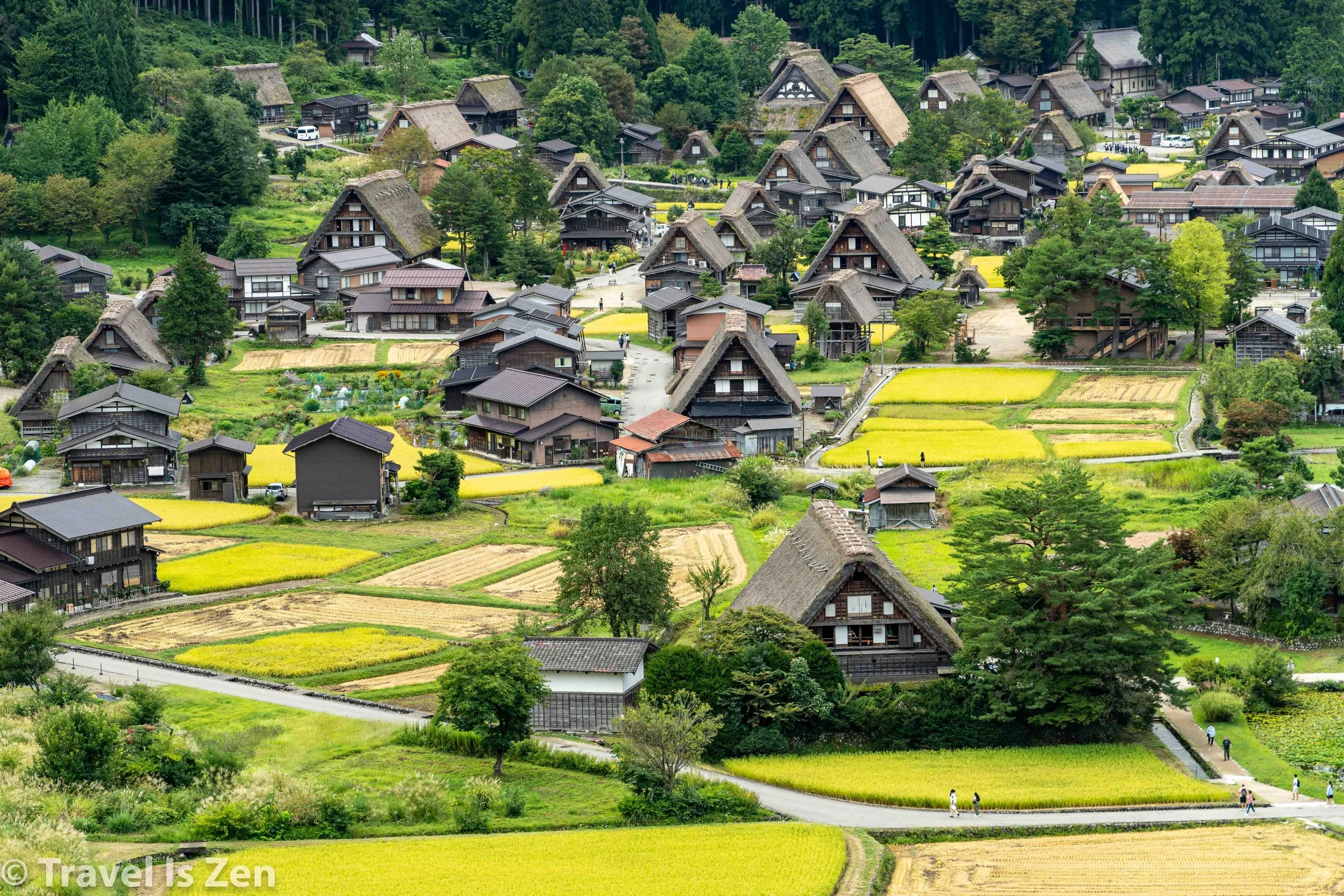UNESCO Gassho Farm Houses in Shirakawa and Gokayama, Japan
In the Honshu Alps region of Japan’s Chubu Province, annual snowfalls are among the deepest on earth. Cold Siberian winds blow across the warm Sea of Japan, dumping recurrent waves of snow upon remote villages. Inside the “praying hands” of 2-foot thick (60 cm) thatched Gassho roofs, Japanese mountain families (and their silkworms) have been protected through the harsh winter months for centuries.
Shirakawa Village, Gassho Farm Houses, Japan
Gassho villages are an excellent example of emergent adaptation to natural environment, isolation, and economic necessity — earning them the status and protection of a UNESCO World Heritage site in 1995. From our base in Hida-Takayama, we day-tripped via bus to two of the preserved Gassho towns (Shirakawa-Ogimachi and Gokayama-Ainokura) before our 5-day hike in the Japan Alps. Far more than just Instagram-worthy, they offer an experiential snippet of living history… a step back in time to the Edo period (1603-1867).
Click any photo for a slideshow.
Gassho-zukuri is a building style consisting of massive cedar beams lashed together with hand-made rope to form a steep 60-degree pitched roof, upon which layers of thatch are added. The resulting shape resembles two hands in prayer (namesake of this building style). These homes are huge! Some of the largest Gassho homes contain three to four stories, designed for several generations of extended family to live and work together.
Click any photo for a slideshow.
A central open staircase spirals upwards from the ground floor to the roof, creating a conduit for heat and smoke to waft upwards from the main living spaces. On the top floor, villagers raised silkworms, which fed on the mulberry trees indigenous to the region. From the feces of the silkworms, the villagers also produced potassium nitrate (nitre), a key ingredient of gunpowder. And from the mulberry trees, they produced a strong paper called washi. While the mountain villages were geographically isolated, they were a recognized and important member of the Kanazawa (or Kaga) Domain during Japan’s Samurai Edo Period; instead of paying their taxes in rice, they paid in silk, nitre, and paper.
Click any photo for a slideshow.
With these lucrative industries, the villagers were quite prosperous and had both the time and resources to develop other unique cultural assets, such as the kokiriko dance, the sasara (a wooden instrument) and accompanied folk songs. They developed their own traditional festivals, rituals, and costumes, as well. These are all on full display at the museum in Gokayama-Ainokura. For a small fee, the lovely, lively, deeply-wrinkled proprietor will enthusiastically teach you a centuries old tune, a song, and dance.
Click any photo for a slideshow.
While they no longer produce silk, these enterprising villages have found new prosperity through tourism. They have turned several of the larger houses into museums, with guided tours; other homes have become tea houses, restaurants, or shops. Some offer a bed-and-breakfast. The towns host popular events, such as seasonal festivals and winter light-up nights. Shirakawa is by the far the most “touristy”; it’s also the largest and least authentic. From Shirakawa-Ogimachi, though, a hop-on-hop-off UNESCO bus drives between a series of smaller, less trafficked Gassho villages throughout Gokayama. To get a sense of “real life”, stroll leisurely through quiet streets, hear the Sho River, and explore hidden mountain paths, I highly recommend visiting at least Ainokura or Suganuma.
Click any photo for a slideshow.
A Few Tips for a Day Trip from Hida-Takayama
From our base in Takayama, we took an early morning tour bus to bustling Shirakawa. After disembarking, we headed straight for the hill climb to the scenic overlook. After snapping some photos, we headed back down for a closer look. Definitely pay the entrance fee for the museum on the opposite side of the river. It is picturesque, educational, and you can tour all the buildings in this zone. Late morning, we jumped on the (strangely empty!) UNESCO bus and headed to Gokayama-Ainokura, where there were just a handful of other explorers. After a stroll along a mountain path overlooking the town, we had a hearty bowl of tempura-soba noodles, visited the museum, and listened to nothing but the sound of cicadas. We headed back to Shirakawa as the waning sun cast its late-afternoon golden rays across the rice fields. We took the last bus back to Takayama around 5:00 p.m.



































